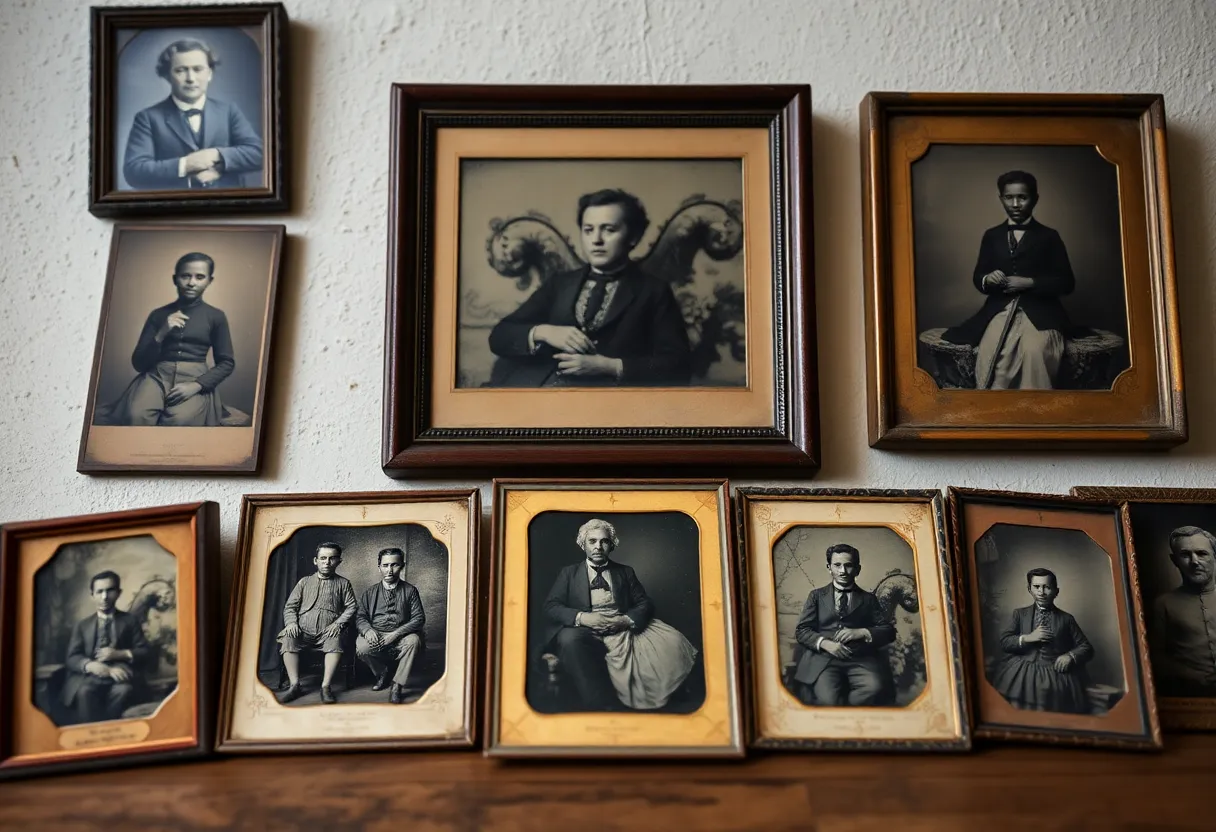News Summary
Harvard University will transfer a collection of historic daguerreotypes believed to be among the earliest images of enslaved individuals to a South Carolina museum. This decision concludes a 15-year legal battle initiated by Tamara Lanier, whose ancestor is depicted in the photographs. The move is seen as a significant step in addressing historical injustices and allows the images to be presented with the respect they deserve. The International African American Museum plans to honor the legacy of those depicted in these impactful images.
Harvard University to Hand Over Historic Photographs of Enslaved Ancestors
In an exciting development, Harvard University has decided to transfer a collection of 175-year-old photographs, known as daguerreotypes, believed to be among the earliest images ever taken of enslaved people, to a museum in South Carolina. This marks the conclusion of a challenging 15-year legal battle involving Tamara Lanier and the prestigious university.
The Significance of the Photographs
The daguerreotypes feature images of Lanier’s great-great-great-grandfather, Renty, along with his daughter, Delia. For many, these photographs represent not just a piece of art history but a deep connection to family, ancestry, and the painful realities of slavery. The transfer to the International African American Museum is seen as a momentous occasion, allowing these images to be presented in a manner that respects the individuals depicted and their histories.
A Long Legal Journey
The legal struggle began in 2019 when Lanier filed a lawsuit alleging that the images were taken without consent and should not rightfully belong to Harvard. Lanier’s case raised important questions about ownership and representation, particularly regarding whether a university could retain “dehumanizing images” of enslaved individuals lacking their consent. A Massachusetts court ruled that the ownership of the photographs rested with the photographer rather than the people in the images, complicating the situation.
Resolution and Future Steps
The recent settlement was celebrated as an “unprecedented” victory not only for Lanier but also for many who descend from enslaved ancestors. As part of the agreement, not only will the photographs be transferred to the museum, but there is also a financial component. The details surrounding the financial settlement remain undisclosed.
Contextualizing Historical Injustices
Harvard has expressed a long-standing intention to release the images for suitable contextualization. This indicates a willingness by the institution to wrestle with its past and play a role in righting historical wrongs. The photographs were initially found in 1976 after being misplaced for decades, and their return is framed as a vital step towards addressing the traumatic legacies of slavery. Lanier’s battle aligns with a broader reckoning many institutions are currently facing regarding their past involvement in systemic racism.
Reflections on the Journey
With the legal saga now behind her, Lanier feels a sense of relief and accomplishment. She has long believed that the images should return to a place where vibrant stories can be told, enriching the understanding of the individuals who endured so much. The descendant of biologist Louis Agassiz, who commissioned these photographs as part of a project steeped in racism, also celebrated the resolution, acknowledging the problematic nature of the imagery and the project itself.
Next Steps for the Museum
The International African American Museum is expected to honor the legacy of Renty and Delia by showcasing their story respectfully, allowing visitors to engage with the dire realities of slavery in a way that humanizes them. This transfer not only restores dignity to the subjects of the photographs but also opens a dialogue about their significance in American history.
Conclusion
While Harvard maintains that they do not confirm Lanier’s claims regarding her descent from Renty, the university has shown an openness to conversation and reflection on its past actions. This moment serves as a reminder of the ongoing efforts to confront the lingering shadows of history and ensures that the stories of those impacted by slavery find their rightful place in the narrative of American history.
Deeper Dive: News & Info About This Topic
- Associated Press
- NBC News
- The New York Times
- Al Jazeera
- The Washington Post
- Wikipedia: Slavery in the United States

Author: STAFF HERE ORLANDO WRITER
ORLANDO STAFF WRITER The ORLANDO STAFF WRITER represents the experienced team at HEREOrlando.com, your go-to source for actionable local news and information in Orlando, Orange County, and beyond. Specializing in "news you can use," we cover essential topics like product reviews for personal and business needs, local business directories, politics, real estate trends, neighborhood insights, and state news affecting the area—with deep expertise drawn from years of dedicated reporting and strong community input, including local press releases and business updates. We deliver top reporting on high-value events such as Orlando International Fringe Theatre Festival, Megacon Orlando, and Central Florida Fair. Our coverage extends to key organizations like the Orlando Economic Partnership and Hispanic Chamber of Commerce Metro Orlando, plus leading businesses in leisure and hospitality that power the local economy such as Walt Disney World Resort, AdventHealth, and Universal Orlando. As part of the broader HERE network, including HEREJacksonville.com, HEREPetersburg.com, HERETallahassee.com, and HERETampa.com, we provide comprehensive, credible insights into Florida's dynamic landscape.




